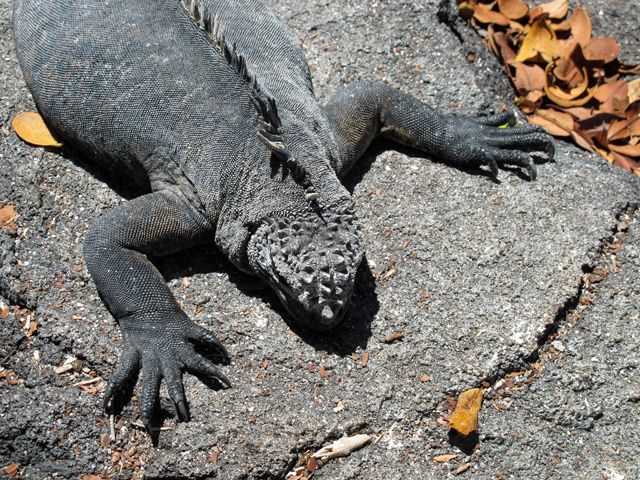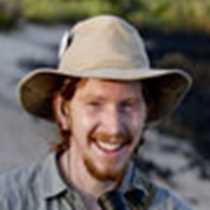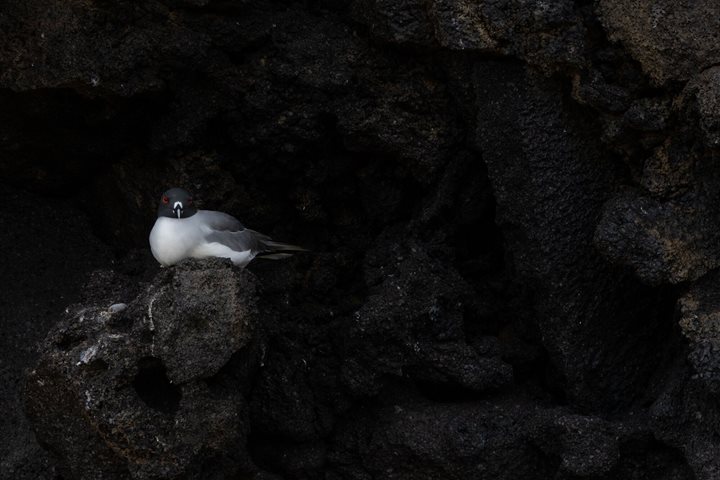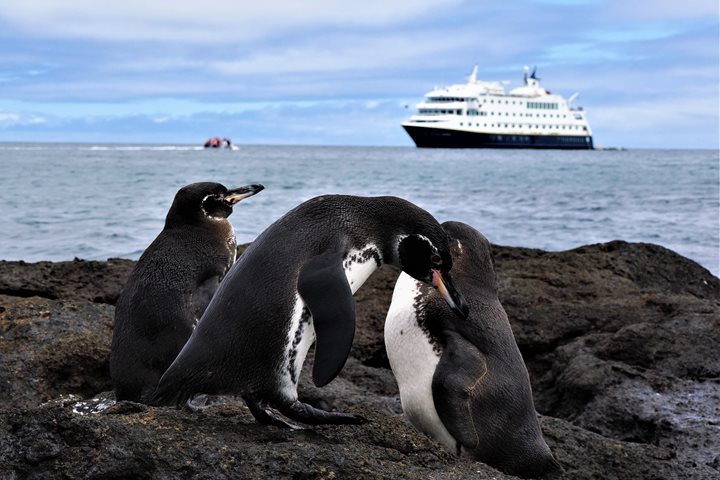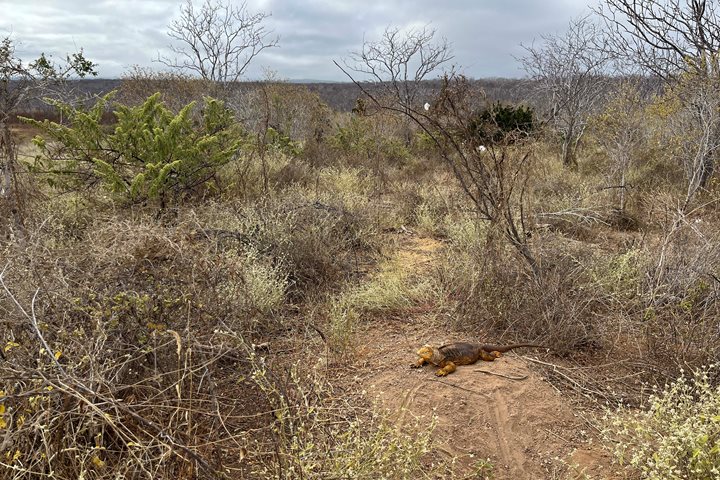Monday 4th September, bright and warm, was a day like no other. We had navigated all night to reach Fernandina and Isabela, the most remote islands of the Galápagos Archipelago. We landed at Fernandina’s northeastern tip, Punta Espinosa, for our morning expedition. Thanks to its highly productive waters, this small peninsula has a large marine iguana population. There were beautiful textures of pahoehoe lavas everywhere, evidence of the volcanism that created this archipelago. Galápagos sea lion pups played in the nearby tidal pools; and a small colony of endemic flightless cormorants fascinated us. Back on board, we spotted a pod of killer whales or orcas; and later in the morning, we snorkeled off Punta Espinosa, amid a number of Pacific green sea turtles. Everything was calm and normal during lunch, until—a volcanic eruption at “La Cumbre,” the summit of Fernandina—the first eruption there since 2009. And there we were, at the right time and place! A tall plume of vapor and ash rose high, a magnificent view against a blue and cloudless sky. In the afternoon, we explored Punta Vicente Roca, located in the outside rim of the Ecuador volcano on northern Isabela. This stunning coastline is the home to flightless cormorant, Despite the surrounding beauty— brown noddies, blue footed and Nazca boobies, and soulful Galápagos fur seal—our eyes were glued on the distant activity at the Fernandina volcano. At sunset, everyone gathered on the deck for a wine tasting, and the most amazing show nature offers—an erupting volcano. As the night deepened, the spectacle became more dramatic, with red-hot lava flowing down the slopes of Fernandina. Unbelievable! We were truly privileged to be in a perfect place at a perfect moment: Galápagos at its surprising best!
- Daily Expedition Reports
- 04 Sep 2017
Fernandina and Isabela Islands, 9/4/2017, National Geographic Endeavour II
- Aboard the National Geographic Endeavour II
- Galápagos
Gaby Bohorquez, Naturalist
Gaby was born and raised in Guayaquil, Ecuador. Her first job in the Galapagos was on board a 90-passenger cruise ship as the cruise director’s assistant, and she fell under the spell of the Enchanted Isles. She returned to Guayaquil to study at the ...
Read MoreEric Wehrmeister, Video Chronicler
Eric began his life on the far western edge of Chicago, where the concrete meets the cornfields. His inspiration has always drawn from the expansive beauty of the natural world, as well as the endless forms that populate it.
Read MoreShare Report
Galápagos Aboard National Geographic Endeavour II
VIEW ITINERARYRelated Reports
10/6/2022
Read
National Geographic Endeavour II
Bartolome Island & Sombrero Chino
On National Geographic Endeavour II today, we explored Bartolome, home of a small colony of Galapagos penguins. Bartolome is one of the youngest islands, and it is located next to Santiago Island in the central part of the archipelago. After an amazing sunrise, we went ashore for a walk, and we were transported back to a time when the land was newly formed. We began our day by hiking to the top of a tuff cone known as the islet of Bartolome, named after the First Officer of The Beagle . Walking on this young island allowed us to understand the formation and volcanism of the Galapagos Islands. The rocks are a great way to understand the area and its geology. We spotted a few lava lizards and painted locusts, some of the very few animals on this island. As we reached the top, we had a great view. Our guests enjoyed the magnificence of Pinnacle Rock. After we visited one of the most iconic geological formations of the Galapagos, our breakfast was enhanced by dramatic views of the impressive volcanic landscape. We visited the beach near Pinnacle Rock, where we enjoyed how the sun made the sand sparkle due to a concentration of silica. Later, we went snorkeling along the channel between Santiago and Bartolome Islands. Many of our guests spotted whitetip reef sharks and very colorful parrotfish. The landscape was beautiful with lots of sea stars. We enjoyed the chance to be surrounded by Galapagos penguins and feel accepted as part of this environment. After a delicious Mexican lunch, we had lectures on the photography of reptiles and Darwin. Afterwards, we went to Chinese Hat Islet to snorkel from the Zodiacs. The area is home to a small colony of Galapagos penguins. In a sandy-bottomed, sheltered channel, our guests enjoyed swimming with whitetip reef sharks, rays, and many fish. It was a nice and sunny afternoon. After snorkeling, we had the chance to explore the unique, small volcano that formed an island in front of Santiago on a sunset Zodiac ride. After a spectacular day full of activities in the field, we returned on board. Every day in the Galapagos is an opportunity to reconnect with the beauty of nature through unbelievable encounters!
10/5/2022
Read
National Geographic Endeavour II
Cerro Dragón, Santa Cruz Island
Today, National Geographic Endeavour II visited Cerro Dragon, located on the north part of Santa Cruz Island. We found one of the largest colonies of land iguanas. During our hike, we spotted the iguanas all around the trail. Some basked on the vegetation, and others were active. We saw the zigzag head movement they use to protect their territory and impress females. An Ecuadorian buffet lunch was set up in the dining room. We started with the traditional ceviche and ended with tres leches for dessert! We enjoyed snorkeling and Zodiac rides. We observed wildlife all over the place, including spotted eagle rays, sharks, blue-footed boobies, great blue herons, marine iguanas, and hundreds of other animals. They all reminded us why the Galapagos is so special.

